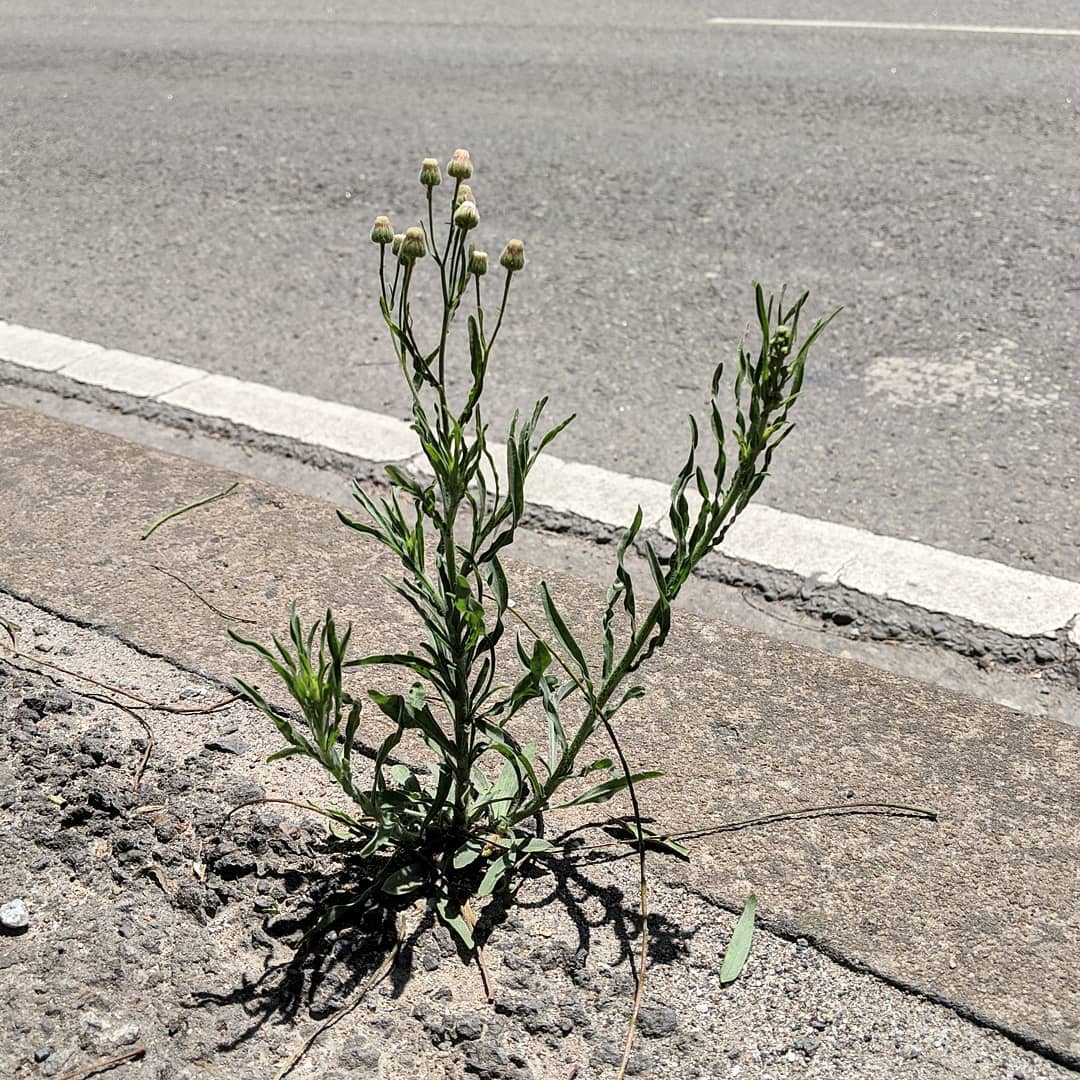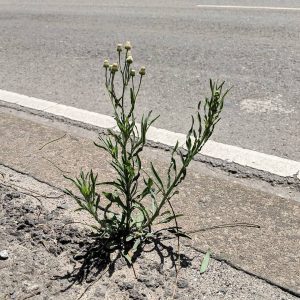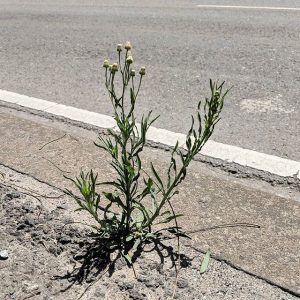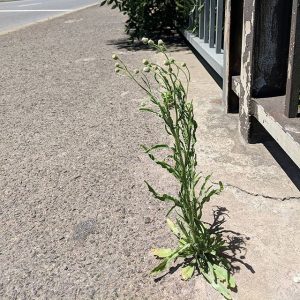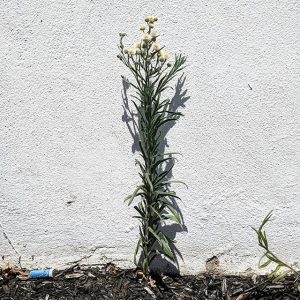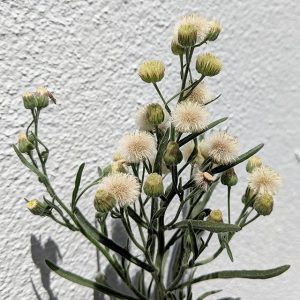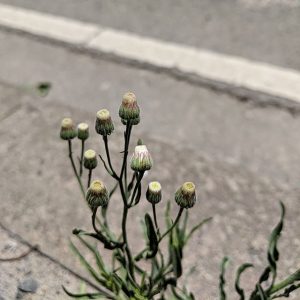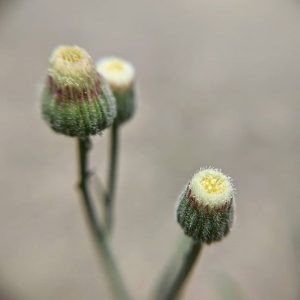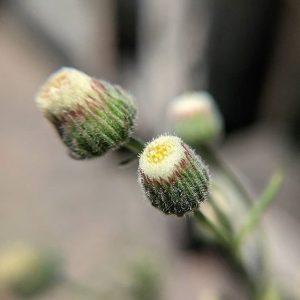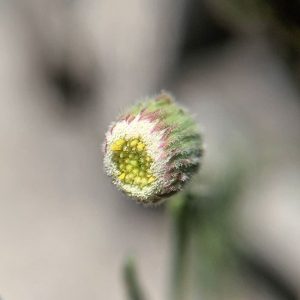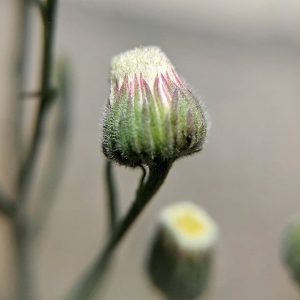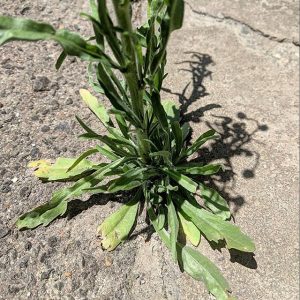Flax-leaf Fleabane (Erigeron bonariensis), a South American colonist of paddocks and grain fields, and a persistent exploiter of pavement cracks and lightly trafficked waste grounds throughout the metropolitan. This is not Melbourne’s strangest weedy Aster (we’ll get to what I think of as the top two in that category shortly), but it would certainly be in the conversation for the honour, particularly when you stop to give this plant a closer look.
Presumably introduced to Europe via Spanish and Portuguese colonial networks, Flax-leaf Fleabane has been effectively globalised, not only to former British possessions but to Iran, China and Japan, the Pacific islands and many parts of Africa. In Australia, there are 1840s collections of Flax-leaf Fleabane in the RBG-Melbourne’s herbarium from NSW, Victoria and South Australia, marking a potentially very early arrival as a contaminant of livestock.
Especially photogenic when it establishes against walls where its delicate structure may enjoy some protection from foot traffic, this is a plant that is spectacular in its own alien modesty and in the tiny elaborated details of its ray-less flowers. Worth noting as we often do: Flax-leaf Fleabane is another plant that has recently joined the club of those species that have succeeded in developing resistance to glyphosate when in agricultural context in this country. No word on whether that resistence has sprung up in the city, but I wouldn’t treat it as at all surprising if it did.
View Original Post on Instagram
Search for information about Erigeron bonariensis in the Flora of Victoria
View information and occurrences of Erigeron bonariensis on the Atlas of Living Australia
